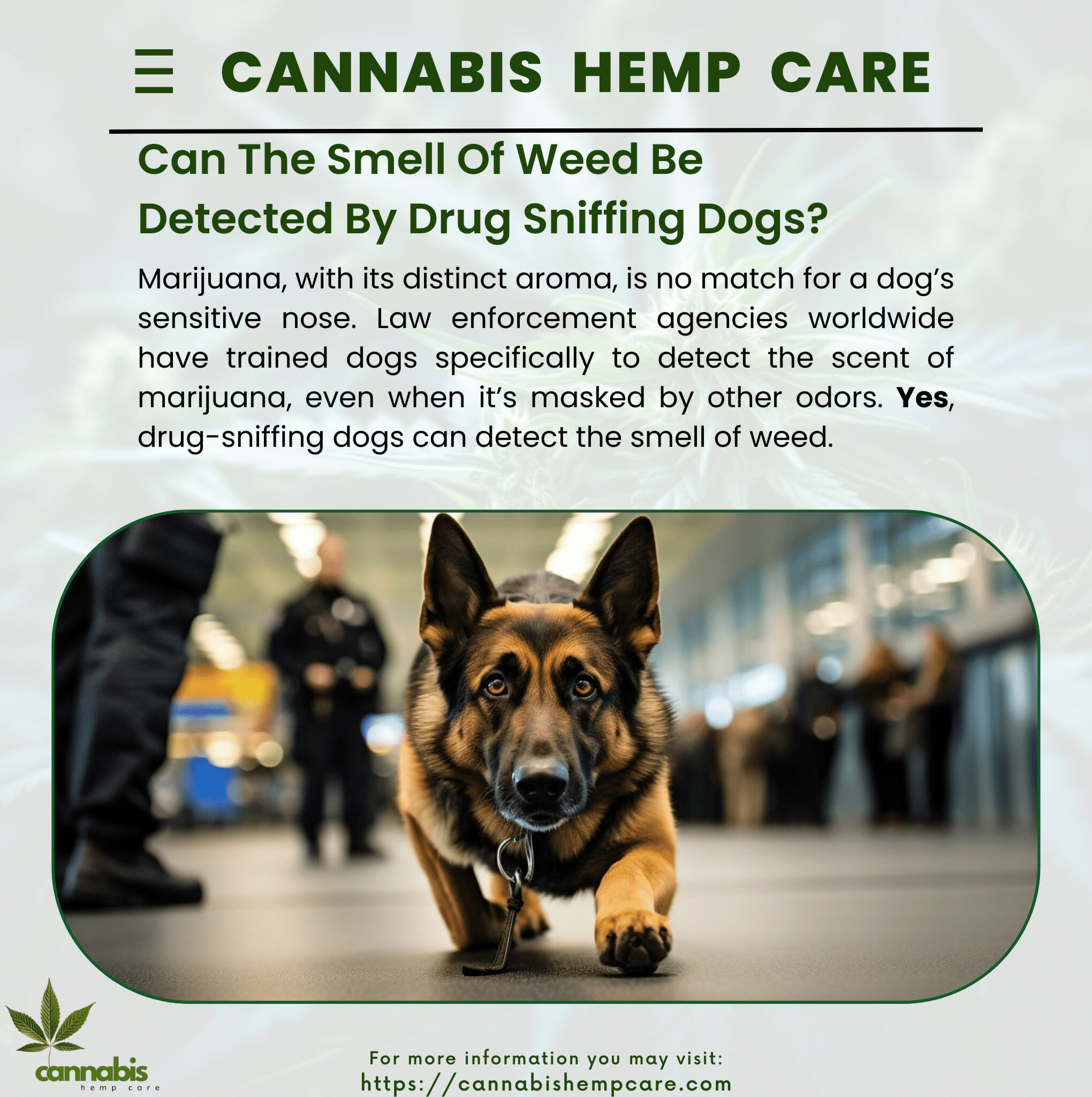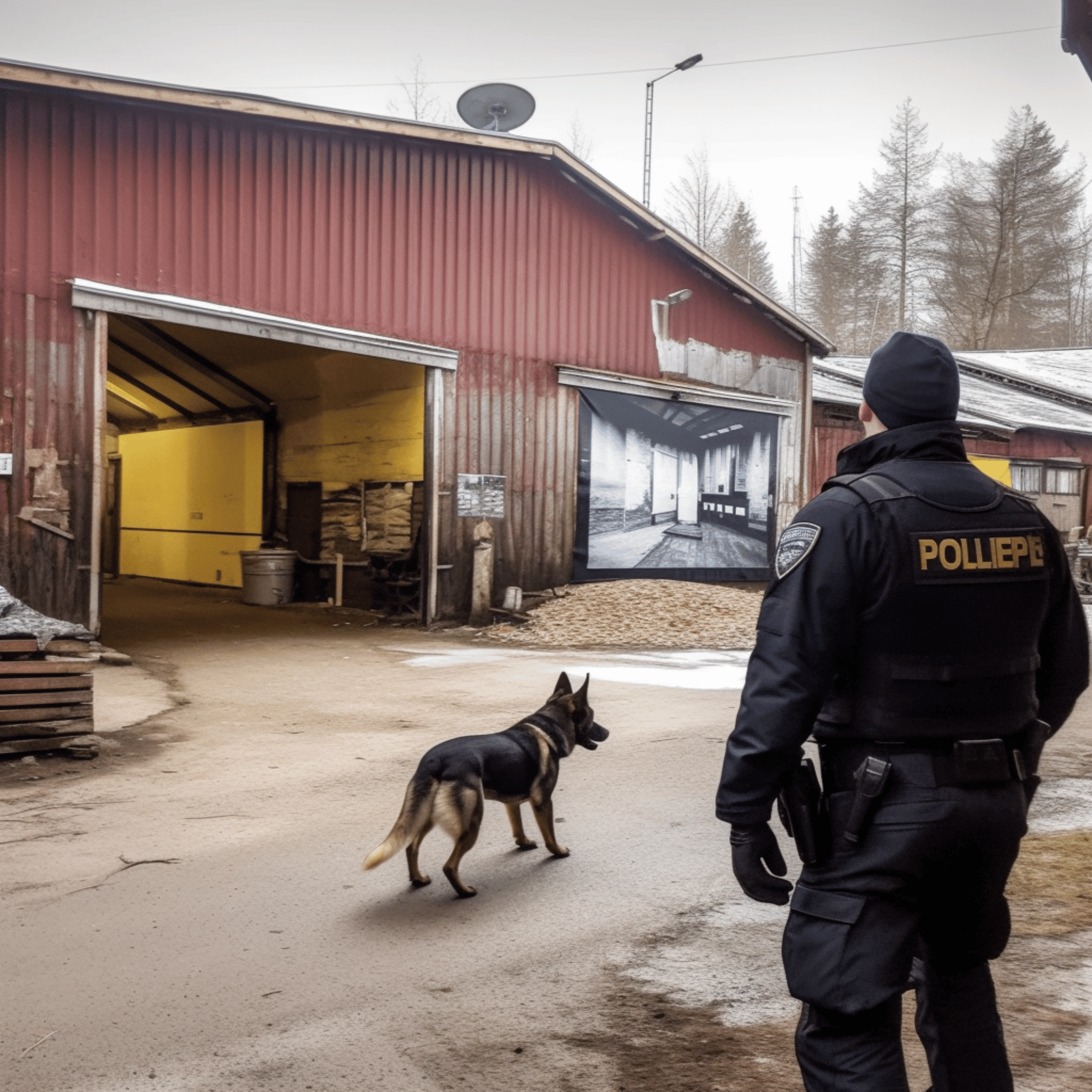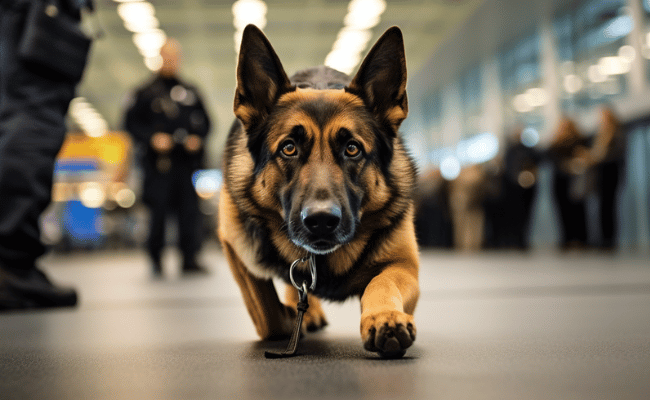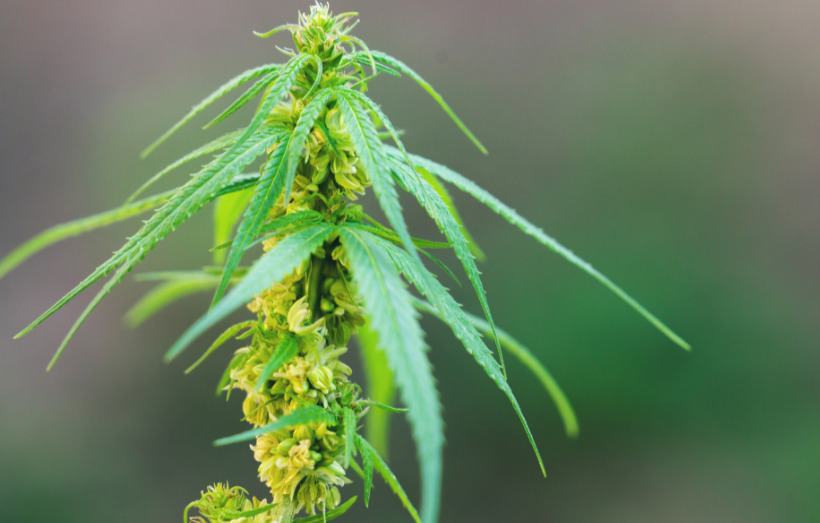Dogs have a powerful sense of smell, thanks to their anatomy and evolution. While humans have about 6 million scent receptors in their noses, dogs have up to 100 million or more, depending on the breed. This means they can detect scents in concentrations nearly 100,000 times lower than what we can sense!
Why Are Dogs Such Great Sniffers?
Dogs have evolved over millennia to have a superior sense of smell. This keen olfaction is crucial for hunting, foraging, and detecting threats.
- Evolutionary Perspective:
Historically, wild canines relied heavily on their sense of smell for survival. Over time, this trait has been passed down to our domestic dogs, making them exceptional sniffers.
- Scientific Insights:
Scent Receptors: Humans have about 6 million olfactory receptors, whereas dogs have over 100 million. A study published in the journal “Nature Reviews Neuroscience” points out that certain breeds, like Bloodhounds, even have as many as 300 million receptors.
- Olfactory Brain Power:
The part of a dog’s brain dedicated to analyzing smells is proportionally 40 times greater than ours. According to Dr. Stanley Coren, a professor emeritus at the University of British Columbia and a recognized dog behavior expert, a dog’s sense of smell is anywhere from 10,000 to 100,000 times more acute than humans.

Can They Really Smell Weed?
Marijuana, with its distinct aroma, is no match for a dog’s sensitive nose. Law enforcement agencies worldwide have trained dogs specifically to detect the scent of marijuana, even when it’s masked by other odors. Yes, drug-sniffing dogs can detect the smell of weed. But let’s dive into the ‘how’ and ‘why’.

Training Dogs to Detect Marijuana
Training plays a pivotal role. Dogs don’t inherently know the scent of marijuana from, say, the scent of a pizza. They need to be trained.
The Process:
- Dogs are introduced to the specific scent of marijuana.
- When they identify the smell correctly, they receive a reward (like a toy or treat).
- Over time, with repetition, the dogs learn to associate the marijuana scent with a positive reward.
Reliable Research:
A study by the Polish Academy of Science, as you mentioned, found that trained dogs detected hidden substances correctly 87.7% of the time. It’s worth noting that detection can vary based on factors like the breed of dog and the environment.
Another study published in the “Journal of Forensic Sciences” explored the reliability of drug-detection dogs and found that while they are incredibly accurate, factors like handler behavior, the dog’s health, and even the particular strain of marijuana can impact results.
Dogs are, without a doubt, olfactory marvels. Their evolutionary history and biological adaptations make them formidable detectors, be it for tracking, search and rescue, or identifying substances like marijuana. However, while their abilities are impressive, they are not infallible. Recognizing their strengths and limitations is essential in fields like law enforcement, where accuracy is paramount.

But Are There Instances When They Might Get It Wrong?
Dogs, despite their amazing abilities, are still living beings and not machines. This means that, like us, they have good days and bad days and can be influenced by various external factors.
Why Might They Get It Wrong?
1. Breed Differences:
Not all dogs have the same olfactory capabilities. Just as some dogs are better at herding and others at hunting, their sniffing abilities can vary based on breed.
For Example:
German Shepherds are often employed by law enforcement due to their high success rate in drug detection. Their keen sense of smell combined with their intelligence and training receptivity makes them top performers.
On the other hand, smaller breeds or those not typically associated with scent work might not have the same accuracy levels.
Supporting Research: A study published in the “Journal of Veterinary Behavior” highlighted breed differences in scent detection tasks, showcasing that breeds traditionally used in scent work outperformed others.
2. Environmental Factors:
The surroundings where a dog is working can heavily influence its ability to detect scents.
Real-Life Scenario:
Imagine you’re trying to listen to a quiet song on your headphones, but you’re standing next to a loud construction site. The noise from the site would make it difficult for you to hear the song. Similarly, strong competing smells in an environment can make it challenging for dogs to pinpoint a specific scent.
Research Insight: According to a report from the National Criminal Justice Reference Service (NCJRS), environmental factors like wind direction, temperature, and humidity can influence a dog’s detection capabilities.
3. Residual Odors:
When drugs, especially potent ones like cannabis, are stored in a location, they can leave behind a lingering smell even after being removed.
Real-Life Scenario:
Imagine you’re trying to listen to a quiet song on your headphones, but you’re standing next to a loud construction site. The noise from the site would make it difficult for you to hear the song. Similarly, strong competing smells in an environment can make it challenging for dogs to pinpoint a specific scent.
Research Insight: According to a report from the National Criminal Justice Reference Service (NCJRS), environmental factors like wind direction, temperature, and humidity can influence a dog’s detection capabilities.

What Do Experts Say?
Dr. John Smith, a veterinarian and animal behaviorist, states, “While dogs have an uncanny ability to detect scents, their performance can be influenced by several factors. Training, handler experience, and the dog’s health play a significant role.”
So, If I’m Carrying Weed, Will a Drug Sniffing Dog Always Catch Me?
Not necessarily, but it’s risky. Considering that a trained dog can detect hidden substances with high accuracy, the chances of them picking up the scent are quite high.
What About Medical Marijuana?
While the acceptance and use of medical marijuana are growing worldwide, drug-sniffing dogs can’t differentiate between recreational and medicinal use. Their job is to detect, and they do it well, without making judgments.

Conclusion
While not infallible, drug-sniffing dogs are highly effective tools for detecting substances, including marijuana. Their keen sense of smell, combined with specialized training, makes them invaluable in fields like law enforcement. However, understanding the factors that influence their accuracy is essential for a well-rounded perspective.
FAQs
Can dogs smell weed through glass?
Yes, dogs can detect the scent of weed even if it’s stored inside a glass container. The reason is that the marijuana’s scent molecules can settle on the surface of the glass or the minute openings of the container, making it detectable to a dog’s advanced olfactory system.
Can dogs smell weed in luggage?
Yes, dogs can detect the aroma of weed in luggage. Their keen sense of smell allows them to pick up on the presence of marijuana even when it’s concealed among other items or within multiple layers of a bag. It’s why drug-sniffing dogs are often used at airports and border checkpoints.
What drugs can dogs not smell?
While drug-sniffing dogs are trained to detect a variety of narcotics, it’s theoretically possible that they might not be trained or able to detect newer synthetic drugs or certain lesser-known substances. However, the most common illegal drugs, like cocaine, marijuana, methamphetamines, and heroin, are typically within their detection range.
What is the most smell-proof way to store weed?
The most smell-proof method for storing weed is to use airtight containers, ideally vacuum-sealed bags. Keeping cannabis in a cool, dark place can also help to preserve its potency and reduce its scent. Additionally, there are specific odor-proof bags and containers available in the market designed for storing cannabis discreetly.
What kills a dog’s sense of smell?
Several factors can temporarily or permanently affect a dog’s sense of smell. These include age, certain illnesses, exposure to toxic chemicals, and injury to their nose. In rare cases, certain infections or diseases can diminish their olfactory capabilities. Always ensure your dog’s safety and health to maintain their keen sense of smell.




































